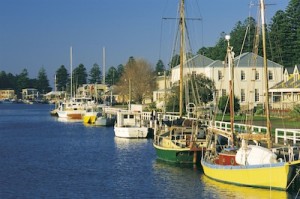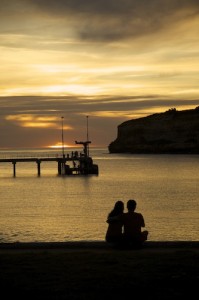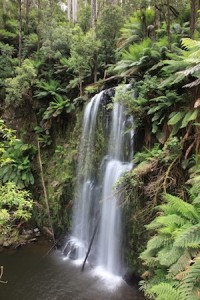GREAT OCEAN WALK
Great Ocean Walk Towns & Attractions
NEARBY ATTRACTIONS & TOWNS.
"there is so much more to see before and after your walk"
The Great Ocean Road and surrounding area offers an amazing amount of attractions, scenic towns and National Parks to explore. To do the area justice you’d need to add another week besides your Great Ocean Walk (Great Ocean Road Walk) so if you’re on limited time then it’s best to concentrate on just one or two areas to experience.
East of the Great Ocean Walk
The coastal towns of Queenscliff, Torquay and Ocean Grove are encountered as the first stops along the Great Ocean Road after leaving Melbourne. An attractive option is to drive to the Mornington Peninsula from Melbourne and then catch the ferry from Sorrento to Queenscliff.
TORQUAY
Dose up on surf culture at Torquay, the official start of the Great Ocean Road and the home of Bells Beach and birthplace of iconic brands Rip Curl and Quicksilver. Torquay is Victoria’s surfing capital where the beach-based culture is at its strongest. Relax on one of the protected beaches, or if you prefer big swells try Jan Juc and Bells Beach. The latter is a world famous beach is the venue for the Rip Curl Pro, one of the most sought after titles on the World Championship Tour, which is held every Easter. Torquay is also home to the Surf Museum – Surf World is a interactive tourist icon which presents the best of surfing from the past, present and future. Surf World provides a spectacular insight into the surf history, culture and the sport itself on a local, national and global level.
LORNE
Lorne is one of Victorian’s favourite places to relax and unwind in the summer, with its pretty swimming and surfing bay surrounded by a backdrop of green forested hills. Lorne has been attracting visitors for more than a century and deserves it’s reputation as Victoria’s premier seaside town. Enjoy the mild weather, café culture, shops, boutiques and galleries.
Lorne also has many natural attractions. Visit some of the area’s stunning surrounds in the Great Otway National Park. Discover the Erskine Falls cascading down into a beautiful fern gully. Stroll along the bushwalks in the gorge of the Cumberland River or take in the view over the Great Ocean Road from bushwalk viewpoints.
APOLLO BAY
Apollo Bay sits at the foothills of the Otways at the end of the most famous & scenic stretch of the Great Ocean Road, from Lorne.
There are multiple activities on offer here: sea kayak with local seals, indulge in some deep-sea fishing, learn to surf, or horse ride along the beach at sunset. Fishing is an important local industry and seafood is always on the menu at the local cafés and restaurants. For great views try Chris’s at Beacon Point high in the hills overlooking the sea. Shop for art and curios in the many gift shops, galleries and tea houses and peruse the regular Saturday foreshore market for local crafts and produce.
Inland from the Great Ocean Walk
THE OTWAYS
Explore spectacular forest and waterfall walks all through the Otway Forests and National Park.
Hopetoun Falls on the Aire River in the Otways
The town of Forrest has become a centre for eco-activities, and mountain biking in particular. Enjoy an exhilarating ride through the ranges on a mountain bike on the many great trails for which the area is famous. Look for the elusive platypus on a beautiful bush walk at nearby Lake Elizabeth.
Otway Fly Take a treetop walk along the Otway Fly and enjoy a bird’s eye view of the spectacular Otway Ranges from the tree top canopies. This is highly recommended for a visit, especially if weather is not suitable for walking on the Great Ocean Walk.
Spot unique native wildlife such as glow worms at Melba Gully & Maits Rest off the Great Ocean Road itself, where you’ll also see remnants of old growth temperate rainforest dating back to Gondwanaland. Both spots offer cool temperatures and pleasant walking on a hot day. The large trees in these rainforest gullies are Myrtle Beech (Nothofagus cunninghamii) and Blackwood (Acacia melanoxlon). Many plants grow on trees here, including Kangaroo Fern, Weeping Spleenwort and Shiny Shield-fern.
For more comprehensive information on the Great Ocean Road area please see:
http://www.visitvictoria.com/Regions/Great-Ocean-Road/
Information on this page has been referenced from Visit Victoria’s website.
West of the Great Ocean Walk
PORT CAMPBELL
Port Campbell sunset scenery
Stop at Port Campbell after your Great Ocean Walk (Great Ocean Road Walk) and admire spectacular coastline
Campbell National Park and The Twelve Apostles. Sheltered by cliffs and Norfolk Pines, Port Campbell has the atmosphere of a haven on the edge of wild nature. A colourful and lively seaside village, Port Campbell is home to restaurants and cafés with views of the beach, bakeries selling homemade goodies and vibrant shops and galleries to explore.
The Twelve Apostles
Port Campbell is a great base for seeing The Twelve Apostles, the dramatic rock stacks that have made this coastline famous. Take to the air for a bird’s-eye view, or join a boat tour around them to experience their immense size. Other stunning coastal features include Loch Ard Gorge, Gibson Steps and the Bay of Islands.
Surf, dive or take a boat tour Creeks and the harbour offer excellent fishing and Two Mile Bay is revered by surfers as one of the best big-wave breaks in Australia. Join a dive tour and visit large canyons and gorges on the sea floor or a boat tour taking anglers and passengers close to the stacks, caves and arches in the area.
WARRNAMBOOL
Discover the seafaring history of Warrnambool and the rugged Shipwreck Coast with a visit to the award winning Flagstaff Hill Maritime Village. Nestled into the rising contour of Victoria’s south-west coast, amid green dairying country and overlooking the deep blue of the Southern Ocean, Warrnambool has had a long and colourful history linked with the sea with marvellous beaches that attract crowds during warmer months.
TOWER HILL GAME RESERVE
Meet koalas, emus, kangaroos and many species of waterbirds roaming freely in Tower Hill State Game Reserve, which sits inside an extinct volcano. Formed some 30,000 years ago in a violent volcanic eruption that created a funnel-shaped crater (later filled by a lake), creeks and islands, Tower Hill’s vegetation was originally very diverse. There are over 200 kangaroos and koalas in this tiny crater-bound ecosystem, and many live around the visitor car park. Emus, echidnas and waterbirds are also abundant. Boardwalks, nesting boxes and a bird hide have been constructed to assist bird watchers in catching a glimpse of many birds, including chestnut teal, musk dusks, and spoonbills.
PORT FAIRY
Uncover history in every corner of this charming fishing village at the end of the Great Ocean Road. Wide streets are lined by nineteenth century cottages, great Norfolk Pines, old stone churches, boarding houses and inns. Many fine examples of the architecture of the 1800s remain intact, and more than 50 buildings are classified by the National Trust.
Heritage walks Follow one of the historic walking trails and discover charming, fully restored white washed cottages built by whalers and seamen beside Georgian-style merchants’ homes and grand public buildings.
The riverfront at Port Fairy. Image & text courtesy of Tourism Victoria
Fishing port At the local port, one of the busiest fishing ports in Victoria, fishermen unload their catch of crayfish and abalone at the dockside, cruising boats and racing yachts dock and anglers try their luck. From the wharf you can head out to sea on a guided fishing trip or take a cruise out to the seal colony on Lady Julia Percy Island.
Art and craft There’s also a range of boutique, antique, art and craft shops to peruse, local artists to see at work and museums to explore. Take in the Port Fairy Folk Festival, one of Australia’s largest music festivals, held each year in March. Or you can relax and enjoy the fine food and wine on offer at one of the many great pubs, cafes and restaurants.




